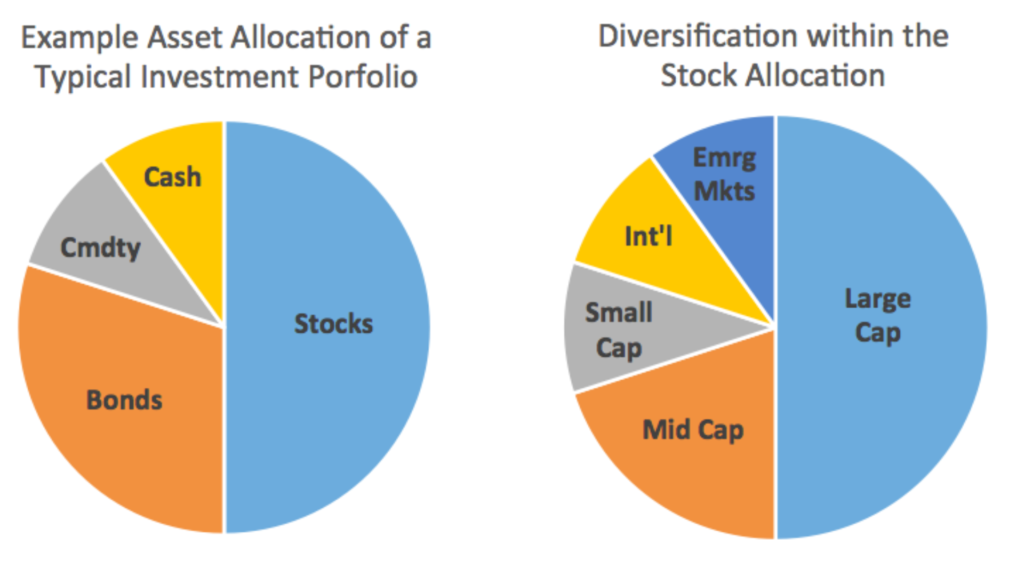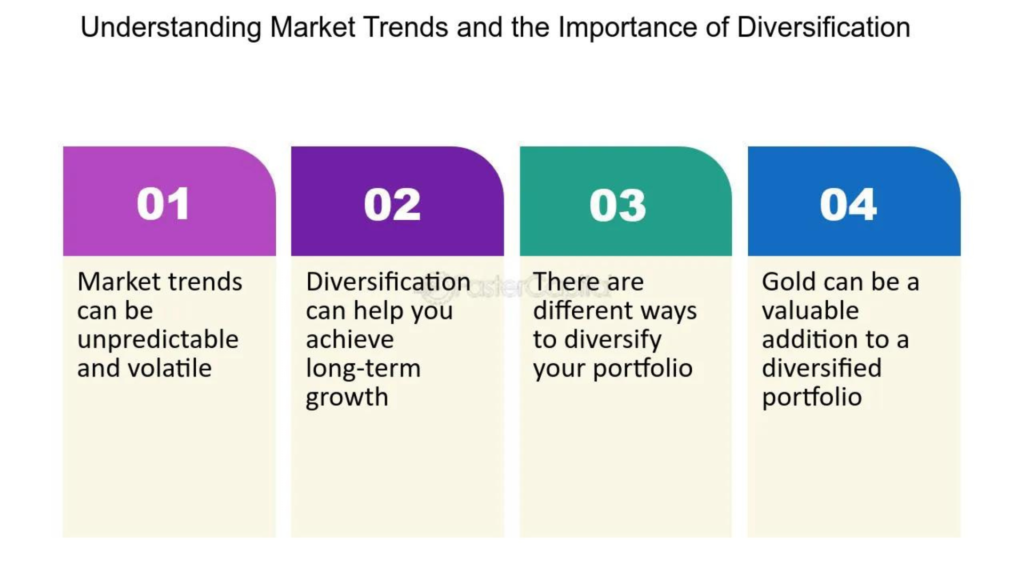One of the most crucial concepts to grasp in investing is that of a diversified investment portfolio. This strategy involves spreading your investments across various asset classes to reduce risk and optimize returns. This comprehensive guide’ll delve into the fundamentals of diversified investment portfolios, their benefits, and essential strategies for building and managing them effectively.
Introduction to Diversified Investment Portfolios
A diversified investment portfolio is a collection of diversified investments across different asset classes, such as stocks, bonds, real estate, commodities, and alternative investments. The goal of diversification is to minimize risk by not putting all your eggs in one basket. Instead, you spread your investments to capture potential gains from different market segments while cushioning against losses in any asset.
Benefits of Diversification in Investment
The primary benefit of a diversified investment portfolio is risk reduction. Investing in various assets can reduce the impact of negative events affecting a particular sector or asset class. Diversification can also enhance potential returns by capturing opportunities in different market conditions. Additionally, it provides a smoother ride through market volatility, leading to more stable and consistent long-term performance.
Understanding Asset Allocation

Asset allocation is determining how to distribute your diversified investments among various asset classes based on your risk tolerance, investment goals, and time horizon. Common asset classes include equities (stocks), fixed income (bonds), cash equivalents, and alternative investments like real estate investment trusts (REITs) and commodities. The key is to strike a balance that aligns with your financial objectives and risk appetite.
Types of Assets in a Diversified Portfolio
A diversified investment portfolio typically includes a mix of the following assets:
Stocks: Represent ownership in a company and offer potential for capital appreciation.
Bonds: Issued by governments or corporations, bonds provide fixed income and lower risk compared to stocks.
Real Estate: Investments in physical properties or REITs can add diversification and income.
Cash Equivalents: Includes cash, money market funds, and short-term CDs for liquidity and stability.
Alternatives: Hedge funds, private equity, and commodities provide diversification beyond traditional assets.
Risk Management Strategies in Diversified Portfolios
Effective risk management is crucial in a diversified portfolio. Strategies include:
Asset Allocation: Balancing investments based on risk and return expectations.
Diversification within Asset Classes: Spreading investments within each asset class (e.g., different sectors in stocks).
Rebalancing: Periodically adjusting asset allocation to maintain desired risk levels.
Use of Derivatives: Hedging strategies using options or futures contracts to mitigate risk.
Building a Diversified Portfolio: Key Considerations
When constructing a diversified portfolio, consider the following factors:
Investment Goals: Determine your financial objectives, such as retirement savings, wealth accumulation, or income generation.
Risk Tolerance: Assess your comfort level with risk and volatility to establish an appropriate asset allocation.
Time Horizon: Consider your investment timeframe, as longer horizons may tolerate more risk for higher potential returns.
Asset Allocation Strategy: Decide on a strategic (fixed) or tactical (flexible) asset allocation approach.
Costs and Fees: Evaluate investment costs, including management fees, commissions, and expense ratios.
Investment Vehicles for Diversification
Investors can access diversified portfolios through various investment vehicles:
Mutual Funds: Pooled investments across multiple assets managed by professional fund managers.
Exchange-Traded Funds (ETFs): Similar to mutual funds but traded on stock exchanges like individual stocks.
Index Funds: Track a specific market index and offer broad diversification at lower costs.
Target-Date Funds: Automatically adjust asset allocation based on an investor’s target retirement date.
Managed Accounts: Customized portfolios managed by professional advisors based on individual goals and preferences.
Market Trends and Their Impact on Diversified Portfolios

Market trends and economic factors can influence the performance of diversified portfolios. Understanding these trends helps investors make informed decisions and adjust their portfolios accordingly. Factors to consider include interest rate changes, geopolitical events, industry trends, and global economic indicators.
Tips for Beginners How to Start Diversifying Your Investments
For novice investors, here are some actionable tips to begin diversifying your diversified investment portfolio:
Educate Yourself Learn about different asset classes, investment strategies, and risk management techniques.
Start Small Begin with a diversified mutual fund or ETF to gain exposure to various assets.
Focus on Core Holdings Allocate a significant portion of your portfolio to diversified core holdings for stability.
Gradually Expand Over time, diversify into additional asset classes and investment opportunities as your knowledge and confidence grow.
Seek Professional Advice Consider consulting a financial advisor or planner to help tailor a diversified portfolio based on your unique situation.
Monitoring and Adjusting Your Diversified Portfolio
Regular monitoring and periodic adjustments are essential for maintaining a diversified portfolio’s effectiveness. Review your portfolio’s performance, asset allocation, and risk levels regularly. Rebalance when necessary to realign with your target asset allocation, considering changes in market conditions, Investment goals, and risk tolerance.
Conclusion
In conclusion, a diversified investment portfolio is a cornerstone of sound financial planning. By understanding the principles of diversification, asset allocation, risk management, and investment vehicles, every investor can build a resilient portfolio tailored to their goals and preferences. With careful planning, ongoing monitoring, and informed decision-making, investors can navigate market fluctuations and pursue long-term financial success.




